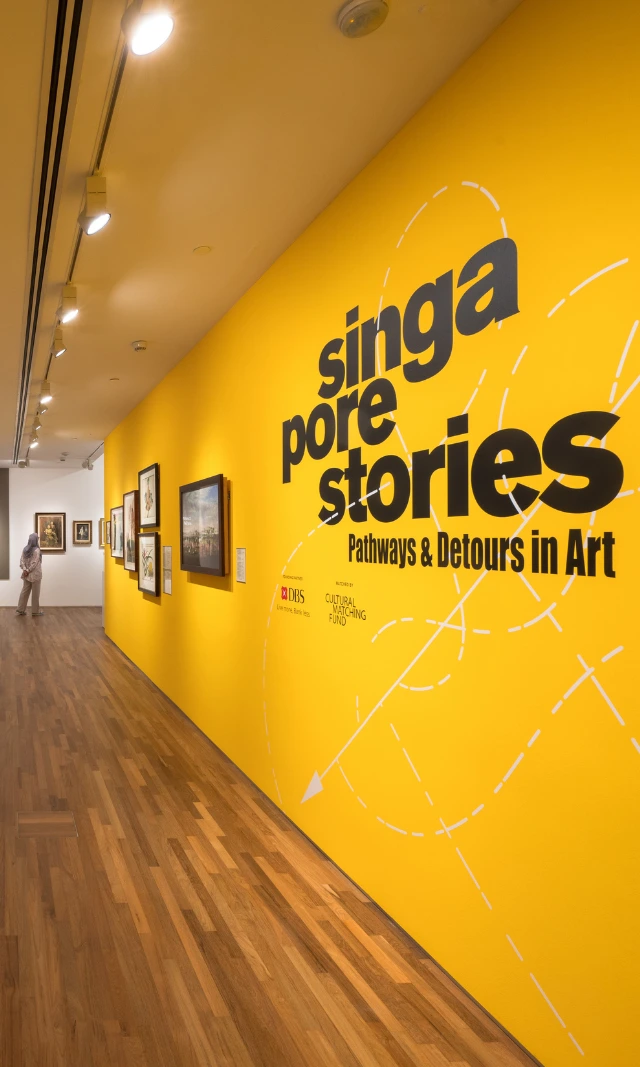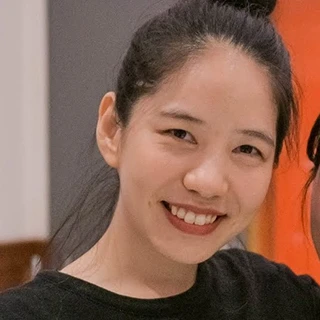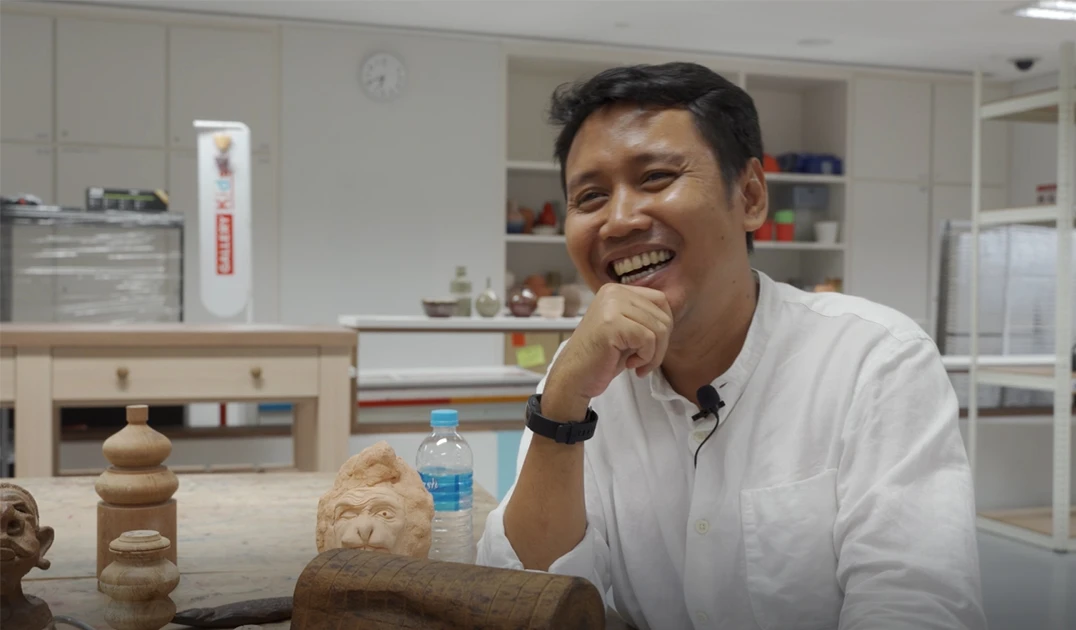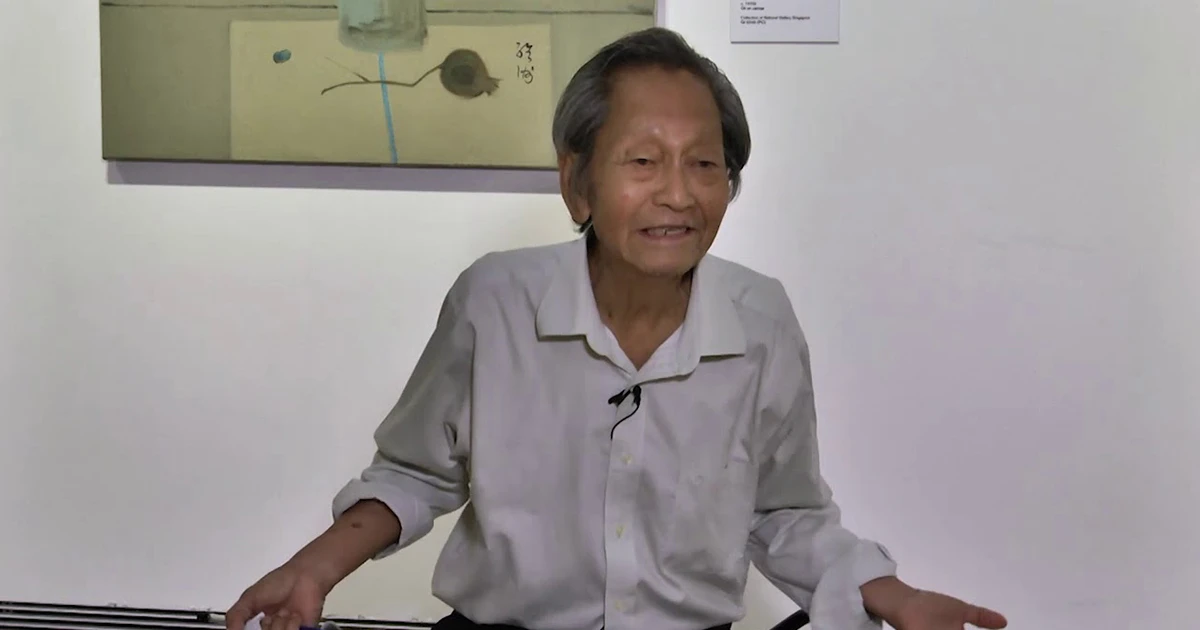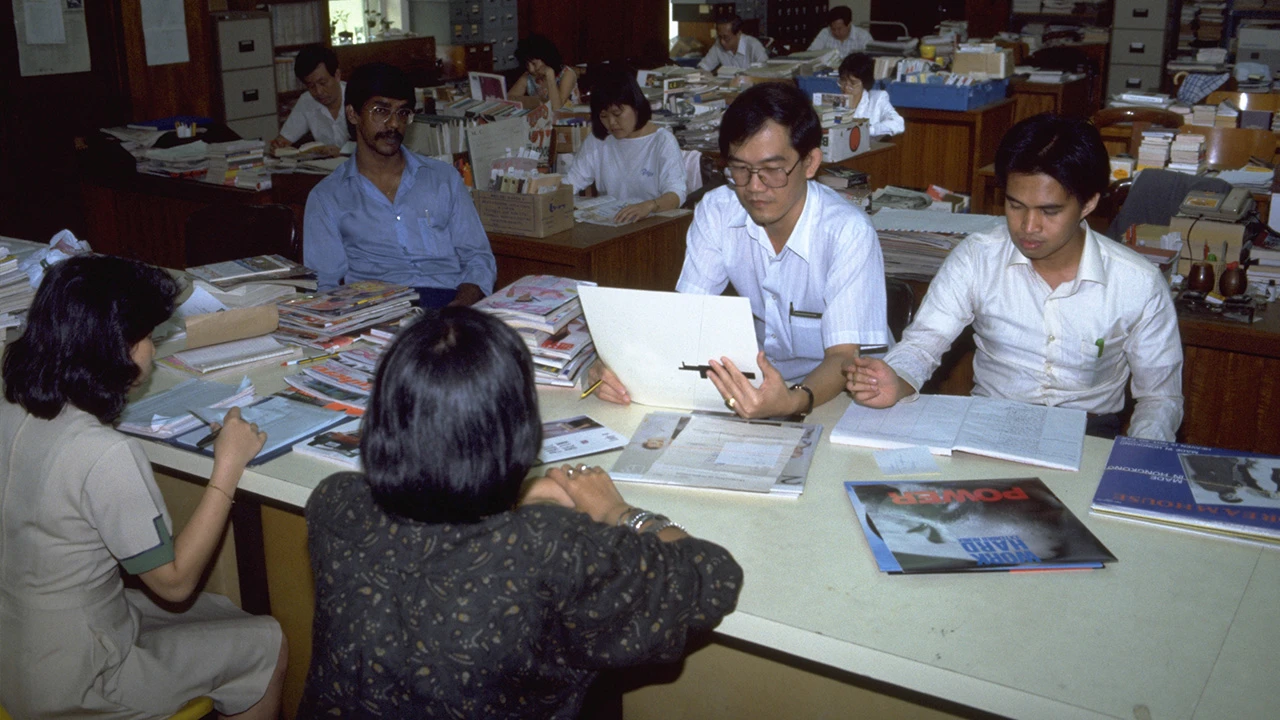Happenings at Disappearance, Bar in the Gallery
In 1973, Lee Kang-So's Disappearance, Bar in the Gallery was one of the first "happenings" he presented in Korea. As the work was reactivated in June 2019 for the National Gallery Singapore as part of Awakenings: Art in Society in Asia 1960s–1990s, programme co-curator Sue Kim reflects on its resonance with artists and audiences today.
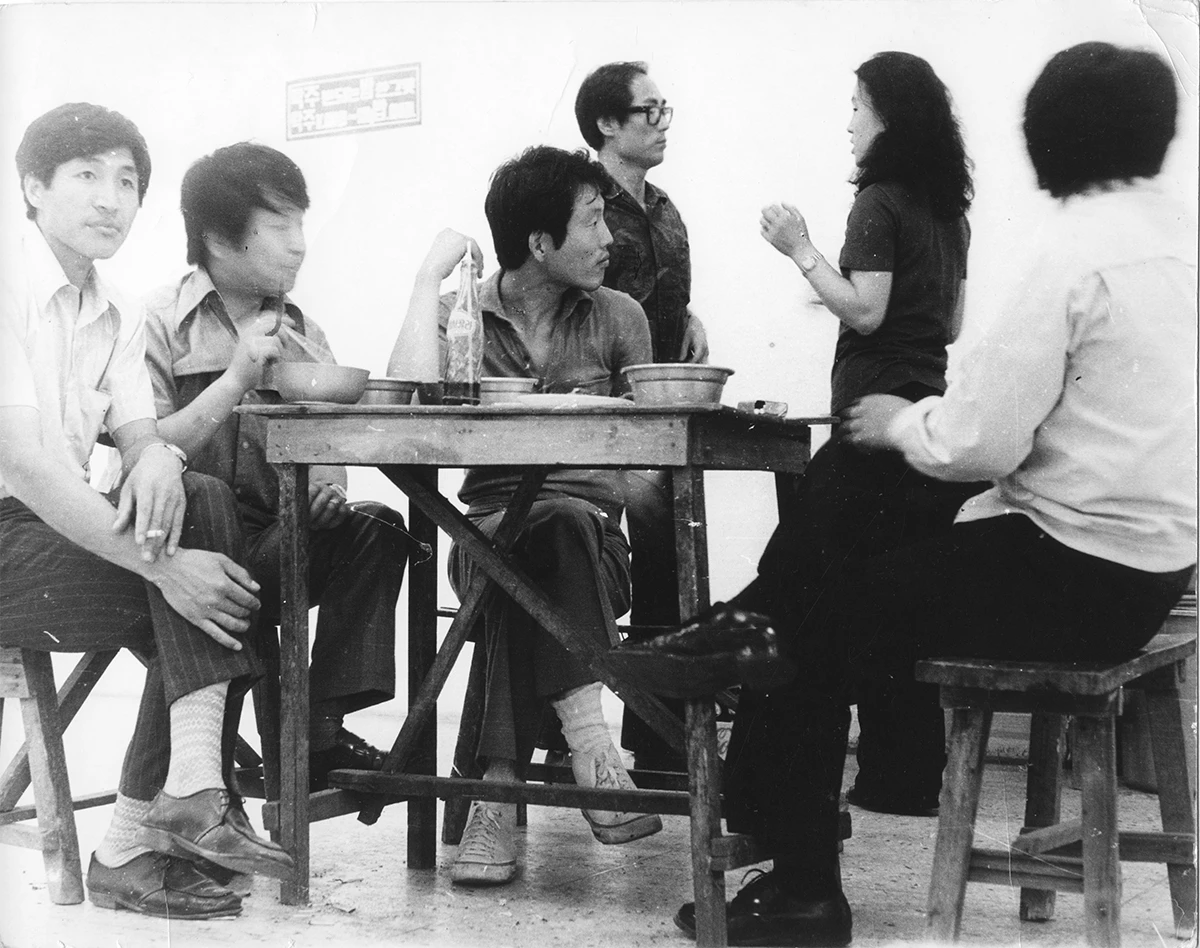
Lee Kang-So
1973
Photograph, c-print on paper, edition 2/10
60 x 90 cm
Collection of National Museum of Modern and Contemporary Art, Korea. Documentation of performance at Myeongdong Gallery, Seoul, 25 June 1973.
When I think of seonsooljip (old pub), a specific image comes to mind: cafe-like bars with simple wooden tables filled by Korean youth back in the 1960s to 70s. Lee Kang-So’s work Disappearance, Bar in the Gallery mirrors this exact image. In 1973, Lee bought the wooden tables and chairs of the seonsooljip he frequented and set them up in Myeongdong Gallery, then the only gallery in Seoul to showcase contemporary art. Disappearance, Bar in the Gallery is composed of fleeting conversations between participants, had across those wooden tables over a cup of rice wine. It recreates the atmosphere at these bars, which stood steady through the appearance and disappearance of the various social relationships forged in them.
This work was one of the first “happenings” Lee presented in Korea in a period when art was hugely influenced by Western abstractionism. A “happening” refers to an event in which the concept of ordinary things is revisited or a work in which the viewer may intervene. Although the clamorous chatter and noise of the original bar are long gone, the cracks, depressions, and cigarette burns on their tables endure. These marks entice the viewer to hear sounds from the bar and feel the presence of former patrons, exciting the imagination and senses.
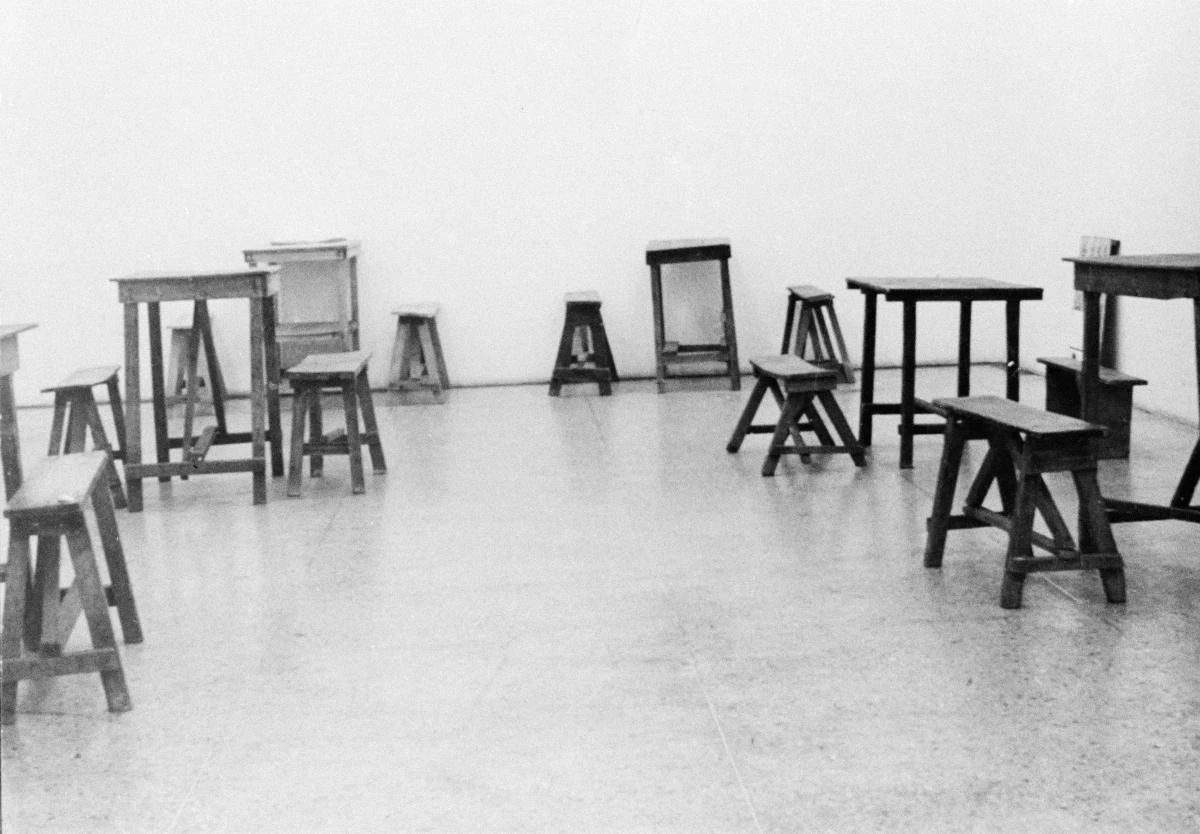
Today, Disappearance, Bar in the Gallery cannot be overlooked in discussions of Korean experimental art from the 1960s and 1970s. This work opens a window into the opaque view of society held by a young college graduate at the time, and the attitude of an artist who was striving to find original approaches in his art practice.
I encountered this work over the years through exhibitions or archival photography, however the work failed to truly resonate with me in those solemn contexts. An invitation from National Gallery Singapore to engage intimately with Disappearance, Bar in the Gallery in 2019 through a performance has transformed my experience with and understanding of this work.
Although the work is almost 50 years old (and looks its age!), its underlying concepts remain pertinent. Lee had just turned 30 when the work was first presented, a stage in his life and career my fellow performers and I find ourselves at now. In the process of revisiting this work forty-six years since its inception, we realised that our aspirations and the issues we grapple with in contemporary society are not much different from those of the same age back in the 1970s.
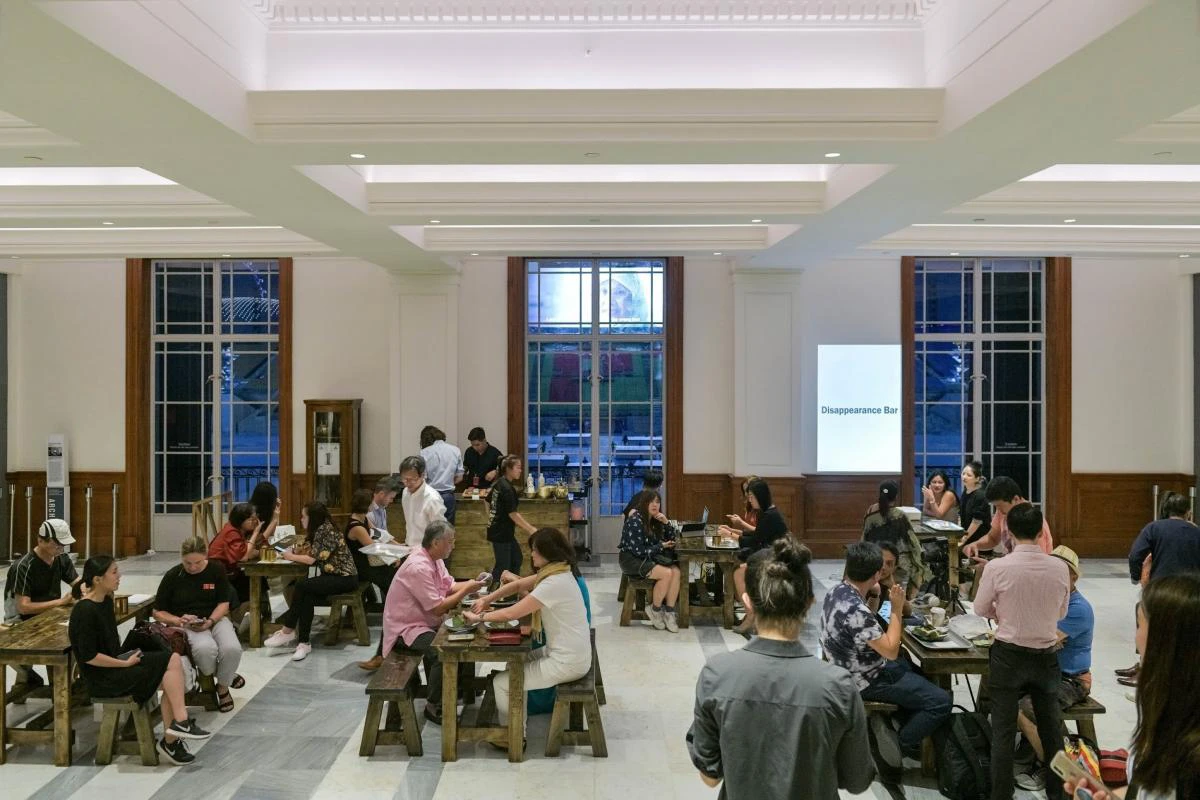
To locate the work in a modern context, we looked at the present with reference to the past, conducting lengthy discussions within and beyond the space before we were ready to place our bodies on stage. Jaehoon Kim (a composer and pianist who plays the melodion as a member of an indie band), Junbo (a choreographer who expresses her unique exploration of objects and spaces in improvisational movements), Soodong Jung (an emerging choreographer who uses research-based performance to show conditions of bodies on the stage), and Ji Hye Chung (a dancer who uses her comprehensive training and practicing background to experiment with the possibilities of connectivity between different performing arts) teamed up to create this joint performance.
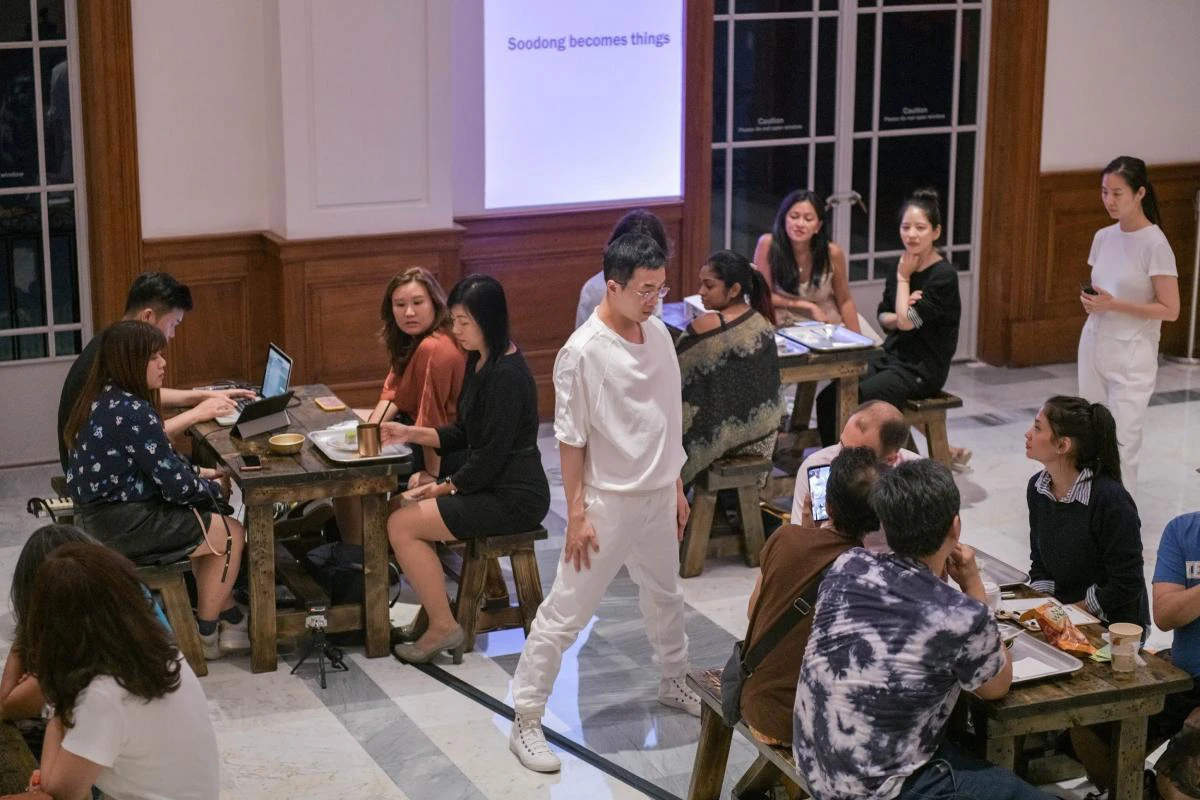
Soodong Jung was first to enter the bar. He had thought deeply about how to convey the work’s symbolism though his body, but chose not to be trapped by the past by embodying objects at the bar. He wandered between tables, “becoming” a body of rice wine being poured down a visitor’s shoulders, and a cup swaying on the table.
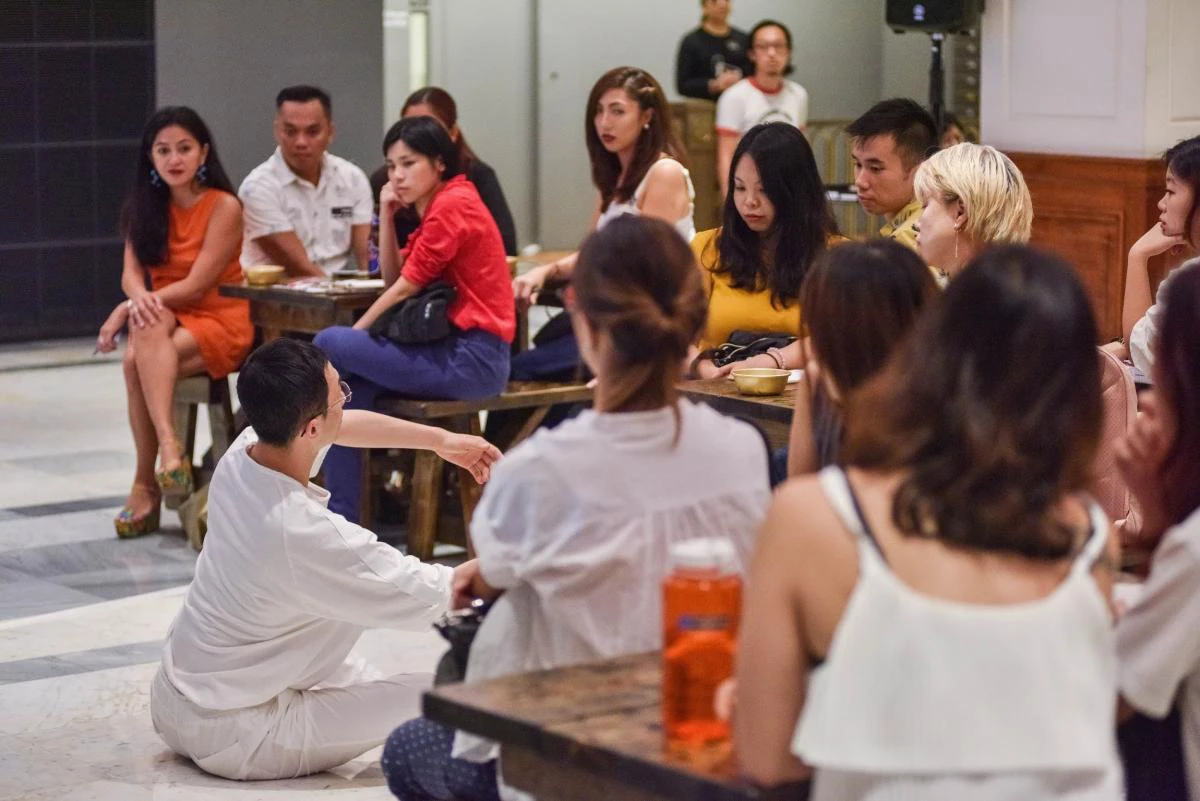
"I became objects from the work without departing from or being trapped by the time from which it came." – Soodong Jung
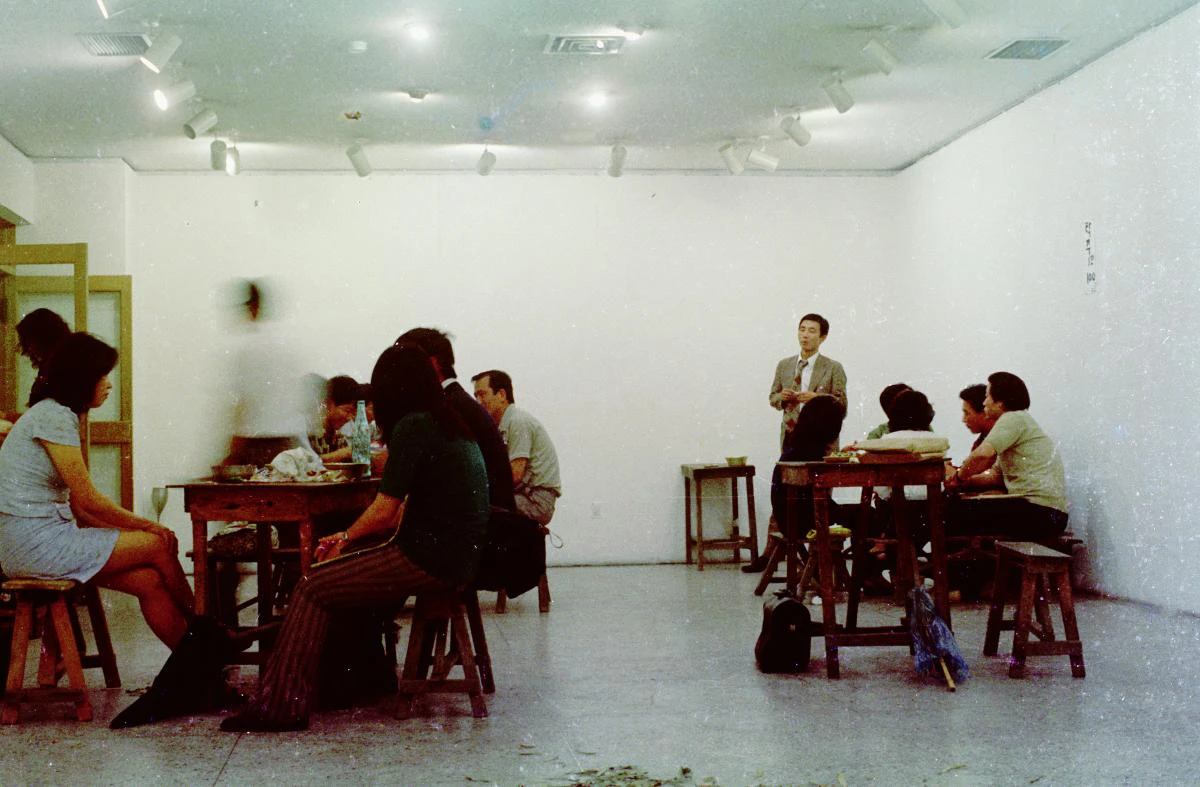 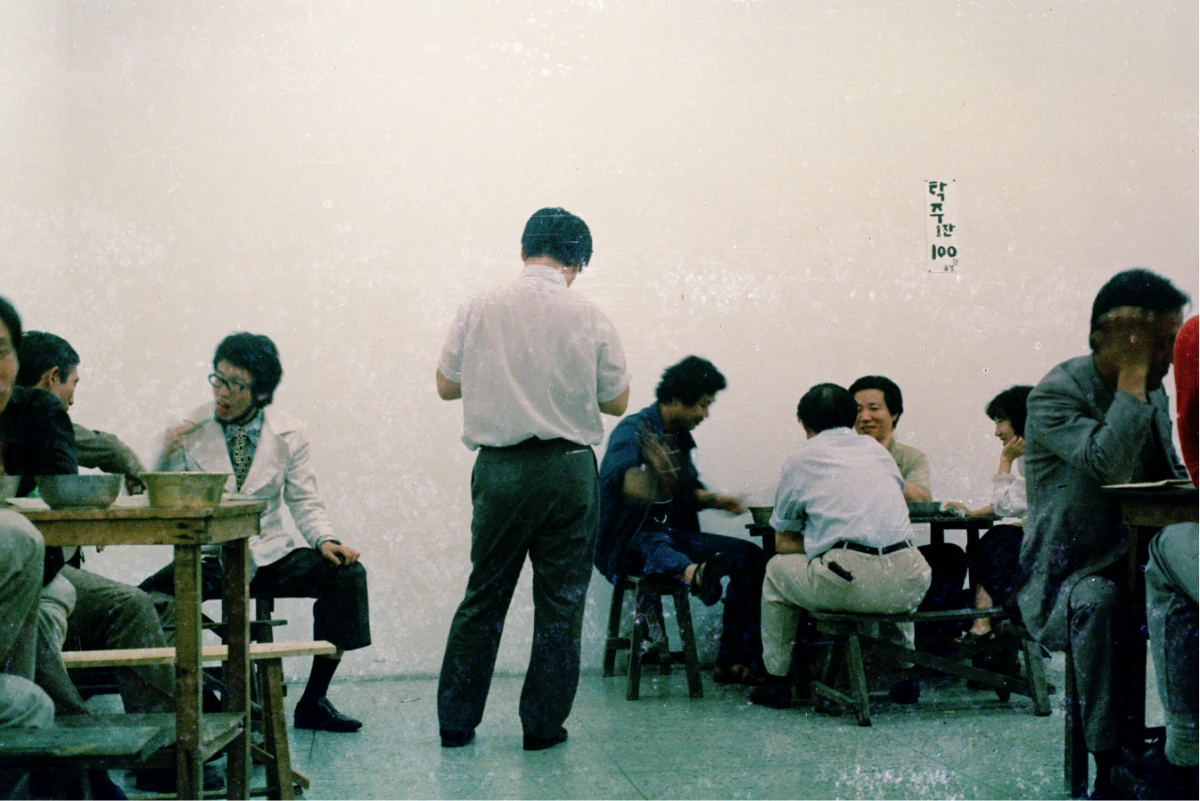 | |
Ji Hye Chung was inspired by the photos documenting previous iterations of Disappearance, Bar in the Gallery hanging on a wall adjacent to where the work was first installed. These photos often accompany the work, testifying to the work’s past existence. Chung wondered what these “installation” photographs missed: the indecipherable, unconscious body language expressed by hands placed on tables or feet touching the floor.
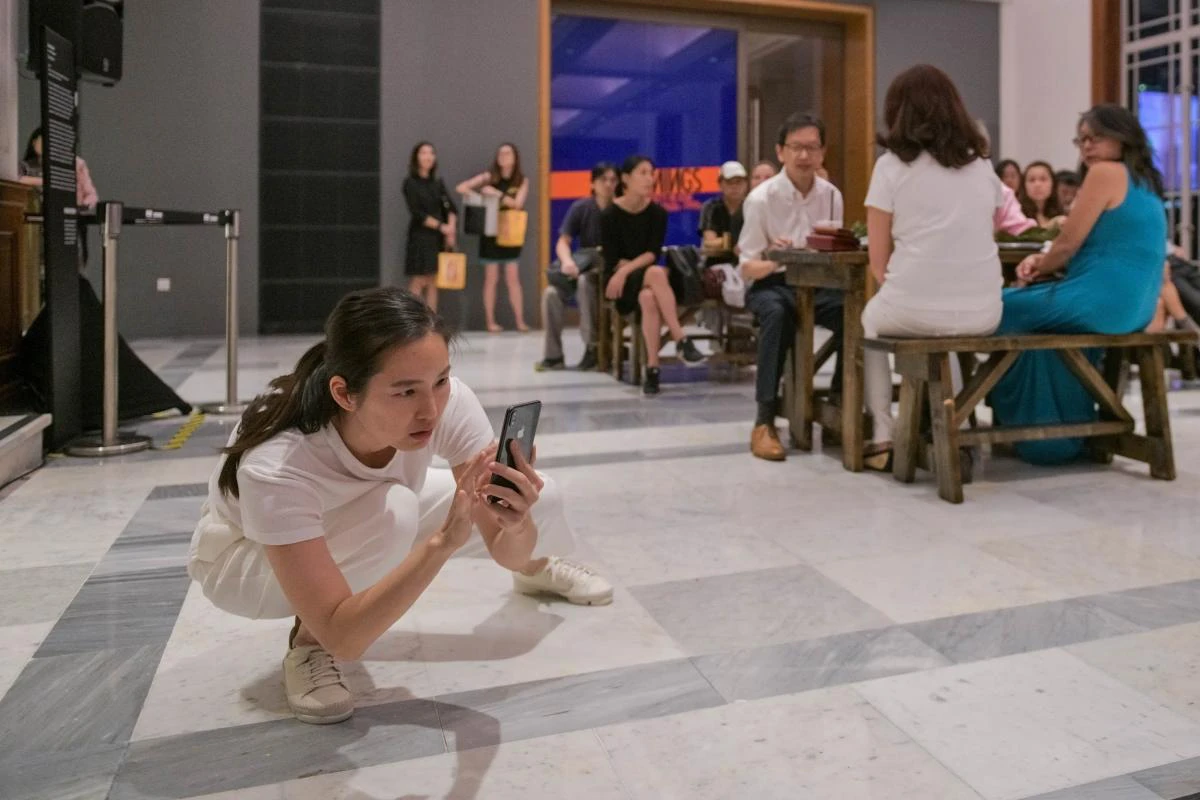 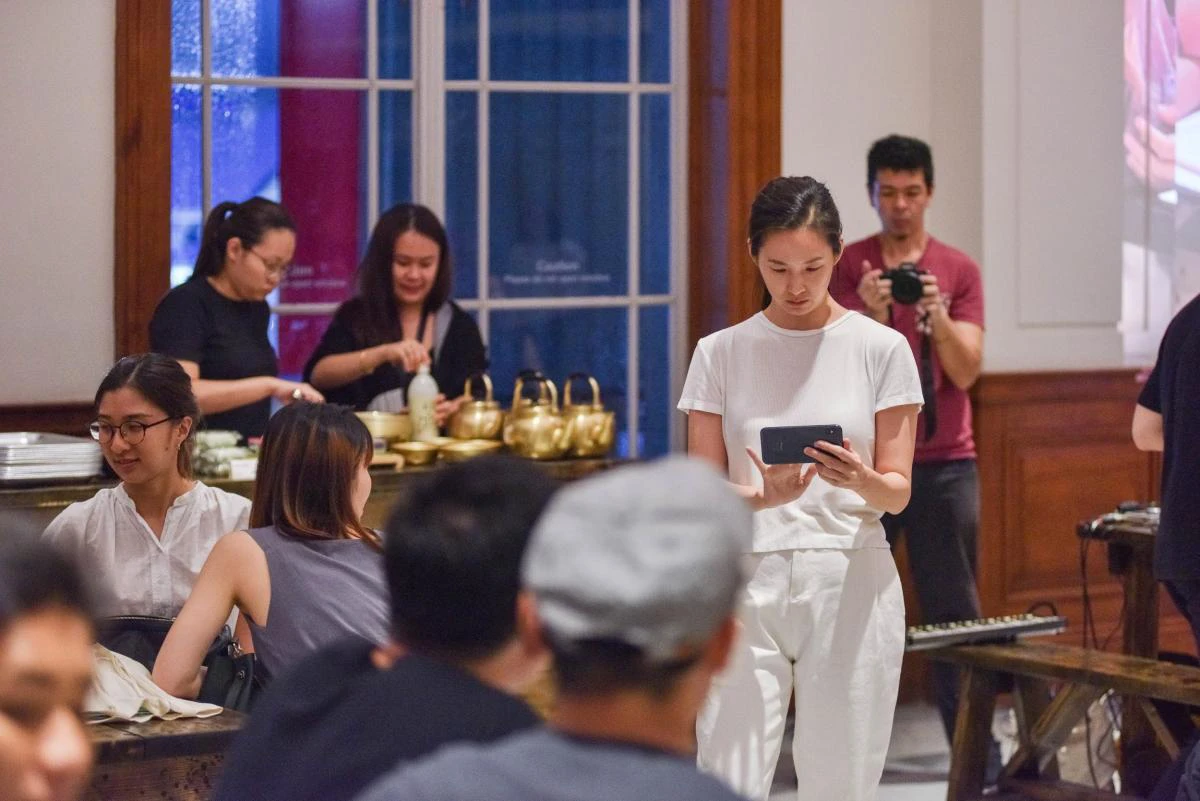 |
As part of her performance, Chung snapped pictures of hands, feet, and other body parts of audience members which were then projected on a screen. The subjective perspective in these images contrasted sharply with the archival nature of those of the first performance from the 1970s. These photographs were deleted at the conclusion of the performance, remaining only a memory.
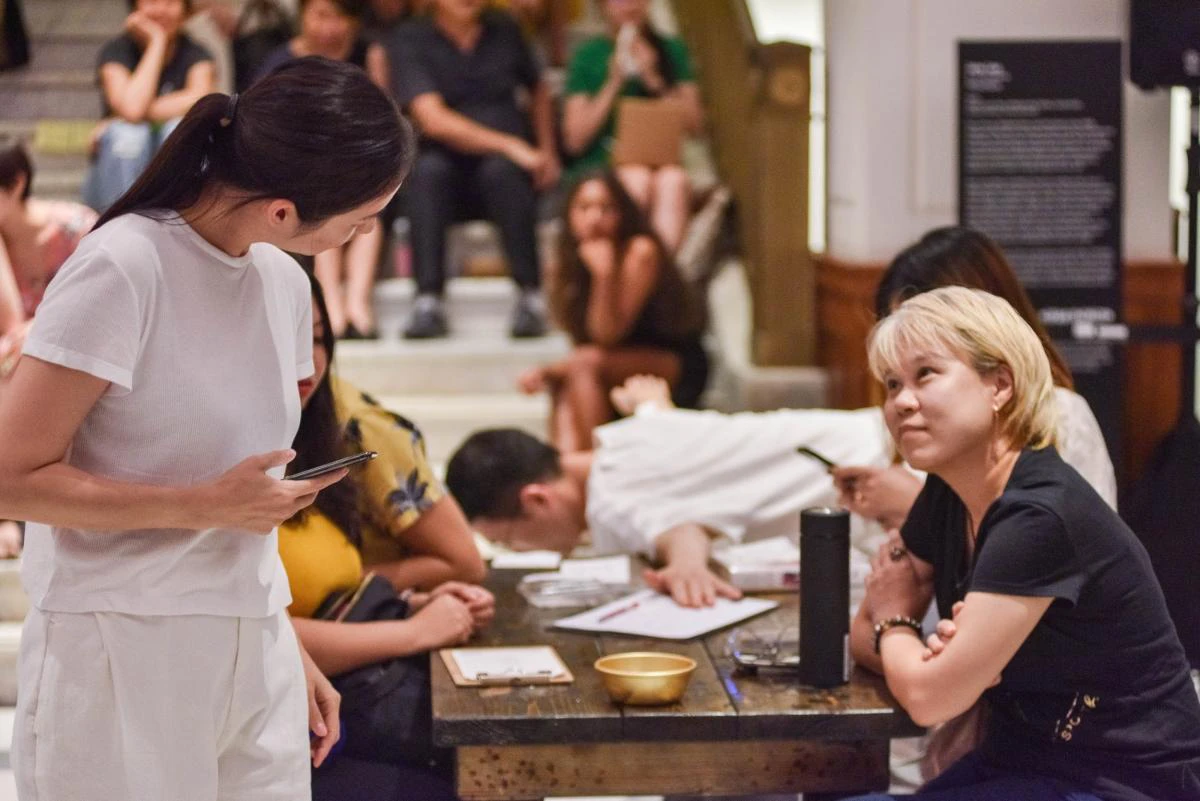
"I tried to show the Singaporean audience the connection between a young man of the 1970s (Lee Kang-So), all of us living in the present, and my personal message through the layering of images at the exhibition site”. — Ji Hye Chung
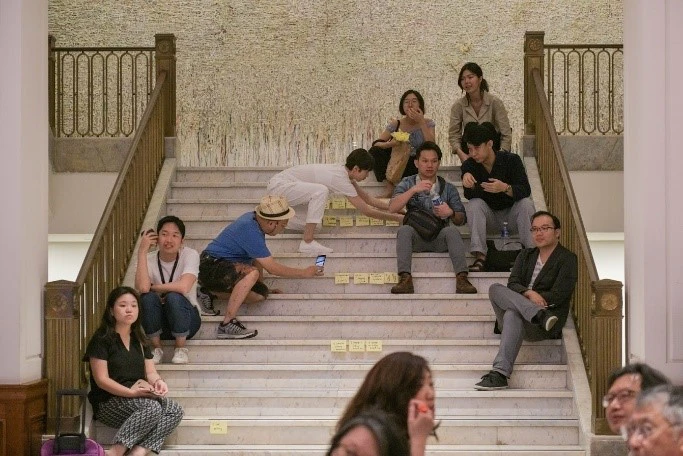
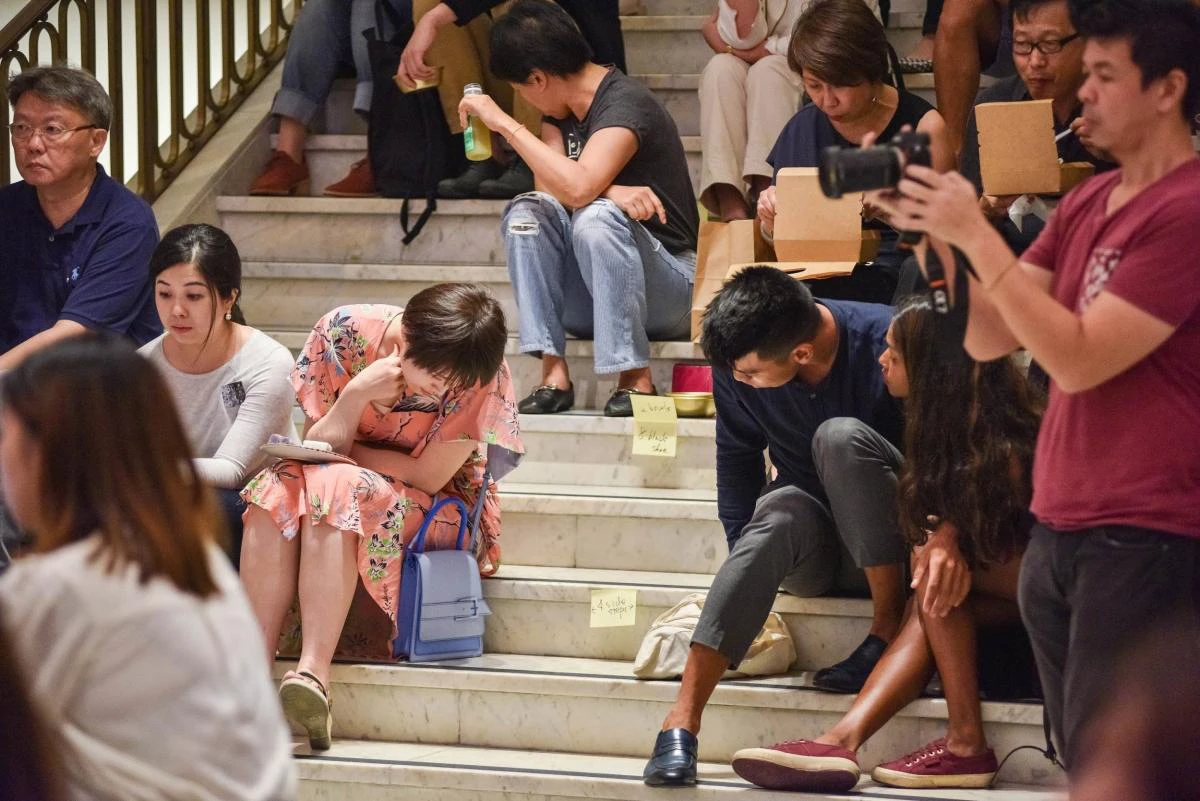
Junbo decided to seize whatever momentary impulse came to her when she threw herself into an unfamiliar space. Liberated from the responsibility to find meaning in the old pub, she found a simple way to examine where she was and to communicate instantly with the audience: by writing down her thoughts and feelings on post-its and delivering them to the audience. Face-to-face encounters, extended eye contact, and her movement through the audience inspired her written notes. Her path was demarcated by the presence of these post-its.
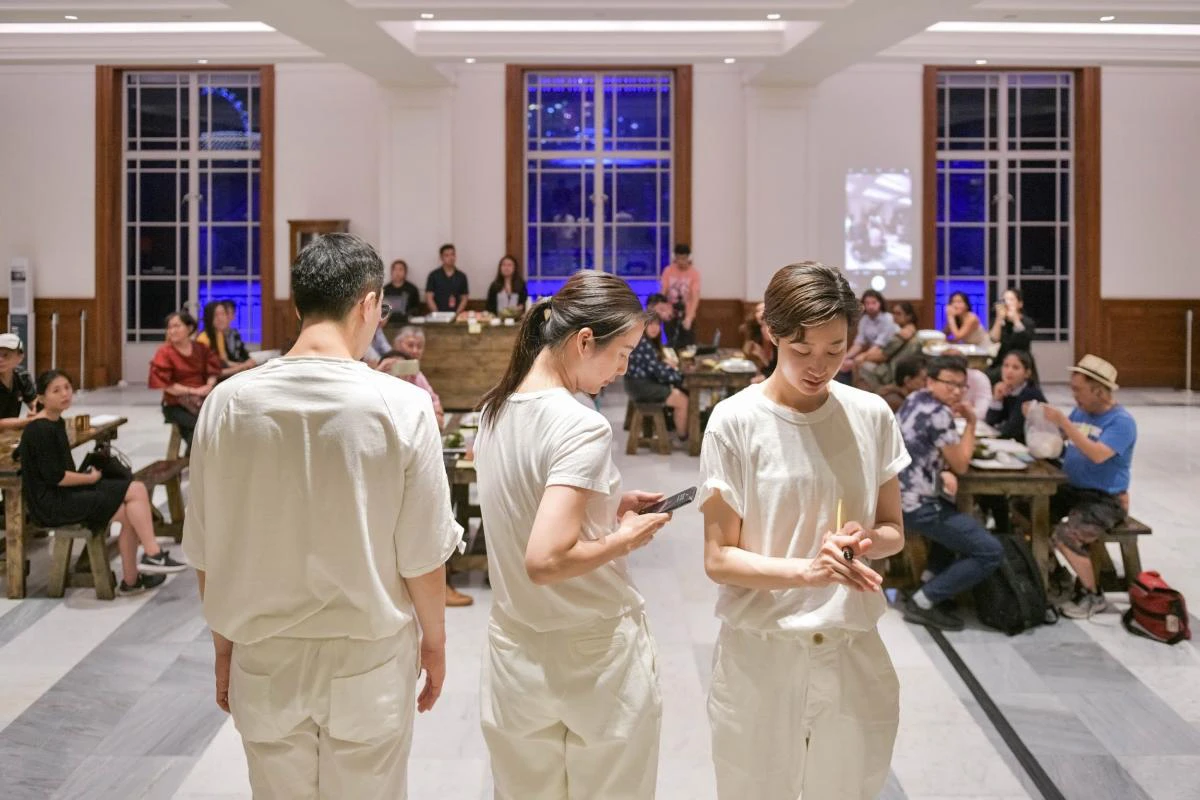
“While the moments of our encounters disappear, over time, the traces we leave behind accumulate and prove that we were once there”. — Junbo
After the three dancers finished their respective parts, they assumed each other’s roles.
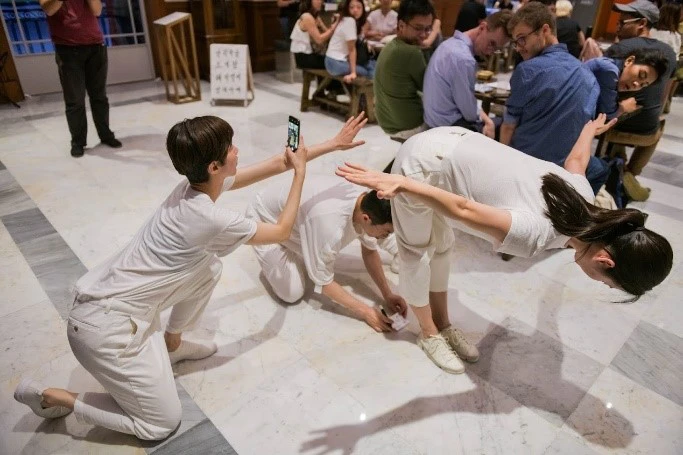
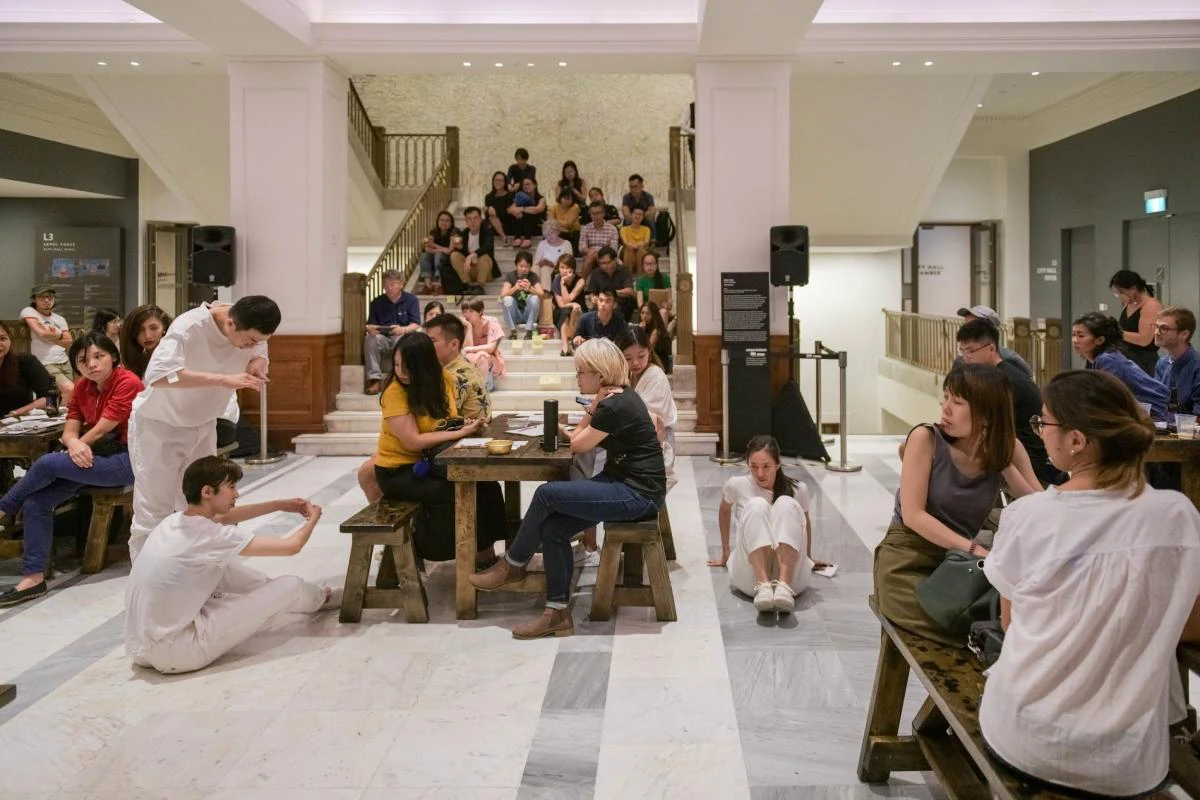
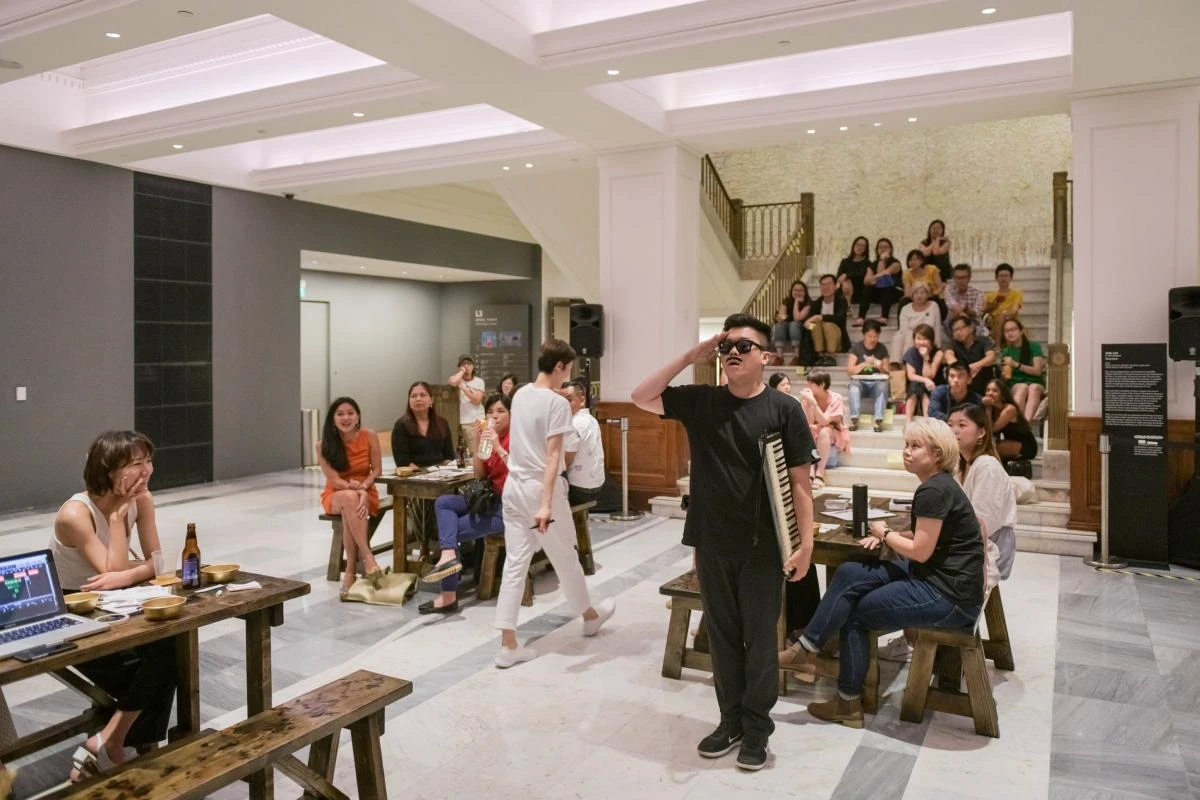
Jaehoon Kim, who had been coordinating the soundtrack for all four parts of the performance, surprised us with his own spontaneity on the final day of the installation. As rehearsals for National Day took place right beside the gallery, glorious music penetrated through the windows to the bar. Struck by an intense audiovisual intervention to our performance, Kim improvised a short yet strong response to it. As he aptly put: “We do what we usually don’t do when we drink”.
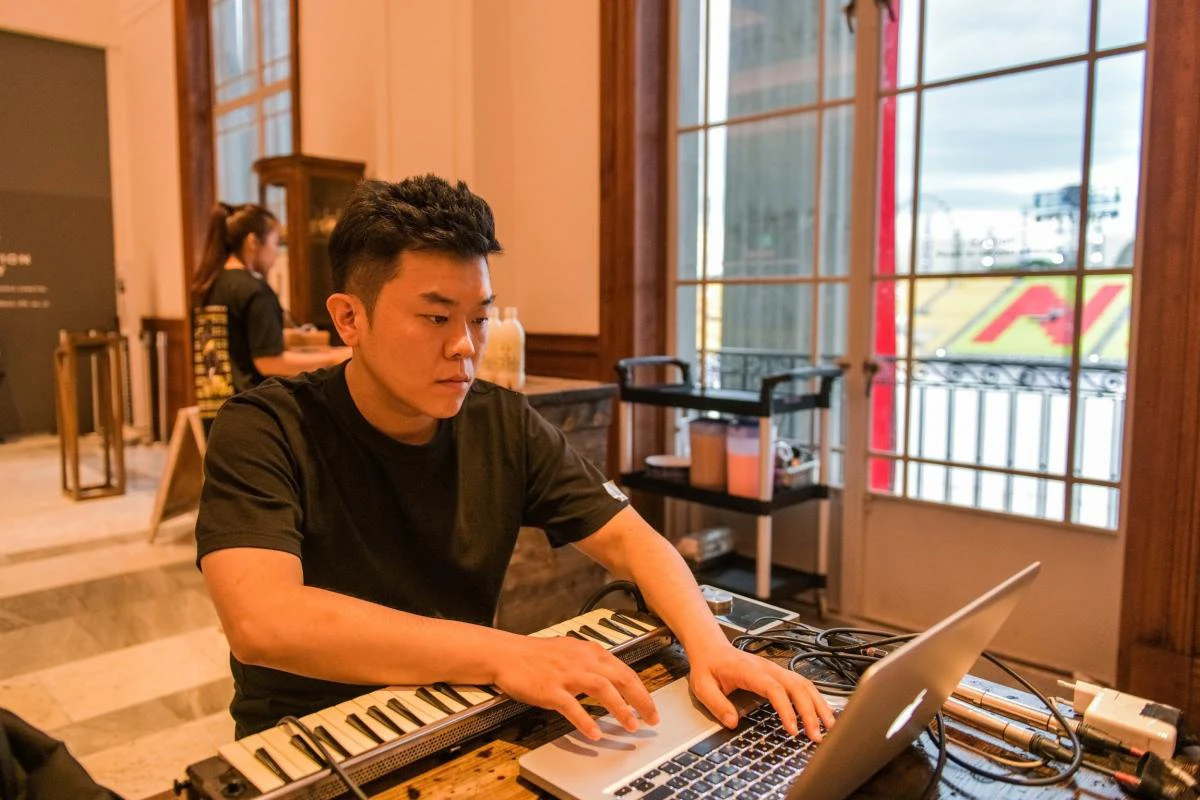
"Disappearance, Bar in the Gallery captures different moments and modes of people’s conversations so intuitively; I thought that our performances, like polyphonic music, fit with the essence of the work”. — Jaehoon Kim
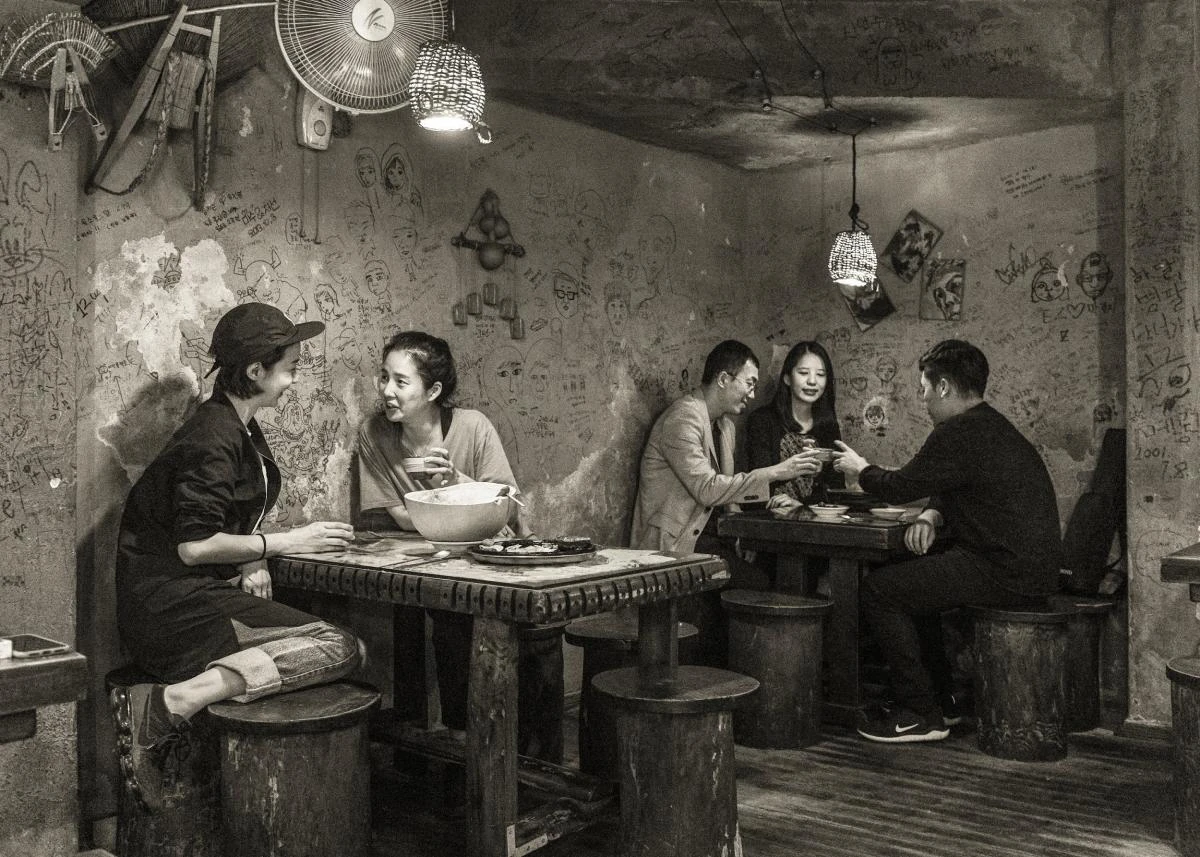
The bar is where people relax, where liquor divulges the unsaid, and where one views their companions in a new light. Conversations may get lost in a haze but some thoughts still linger the next day and the day after. Indeed, we do things we usually don’t when we are at a bar.
My fellow artists and I found ourselves performing within a bar made almost 50 years ago, for an audience living in modern times. It presented an untrodden path that led to a joyous journey for everyone involved. After the performance, as we stepped out of the bar, we realised that a new door had opened for us.
Highlights from Disappearance, Bar in the Gallery
Editor's Note
Lee Kang-So's Disappearance, Bar in the Gallery was reactivated for a second and final performance by INTER–MISSION on 22 and 23 August 2019. Read more about the work here.








